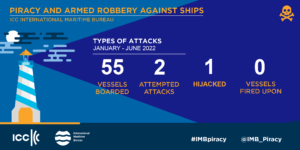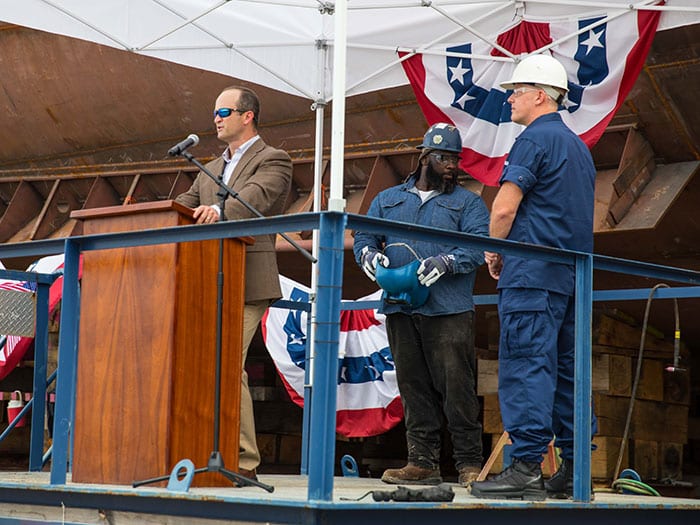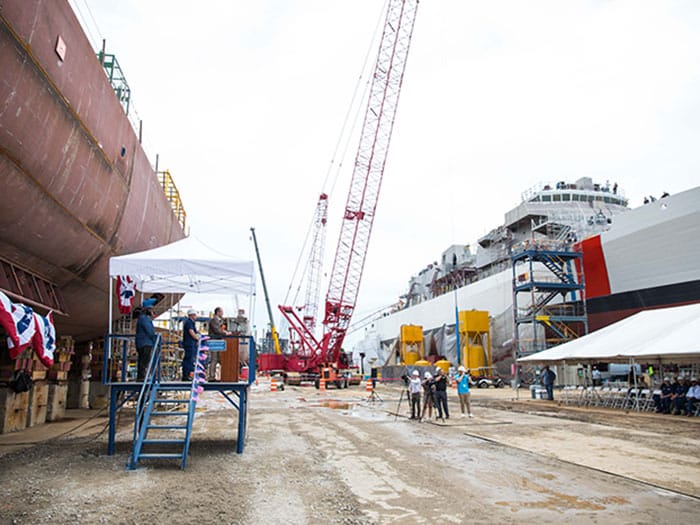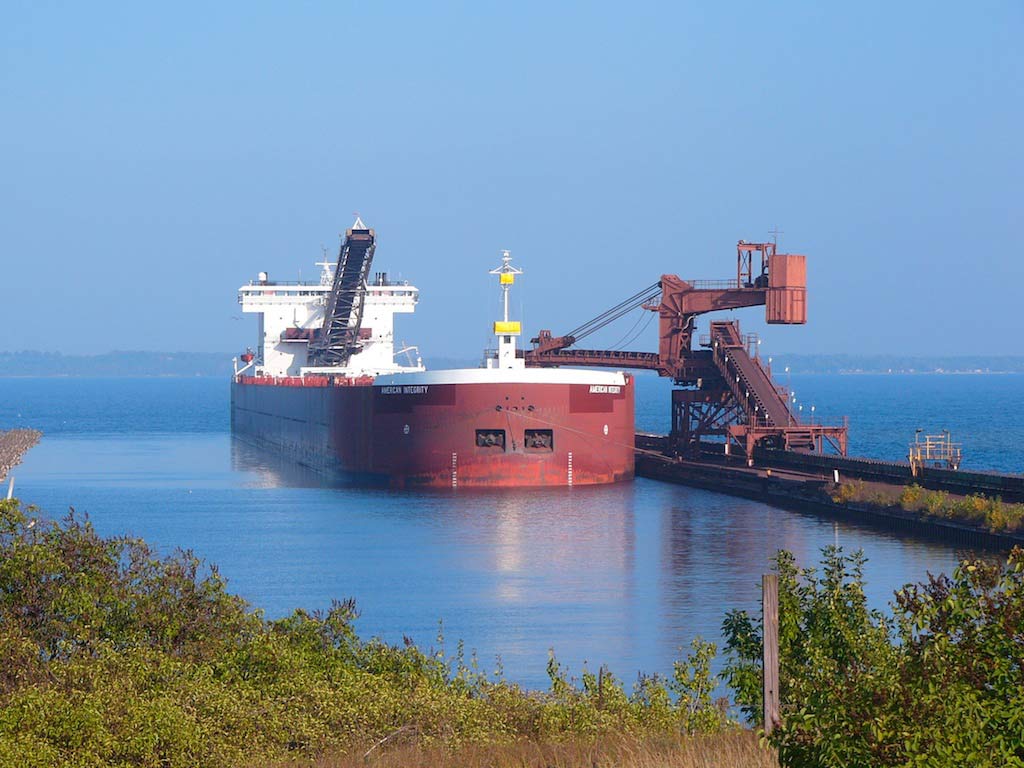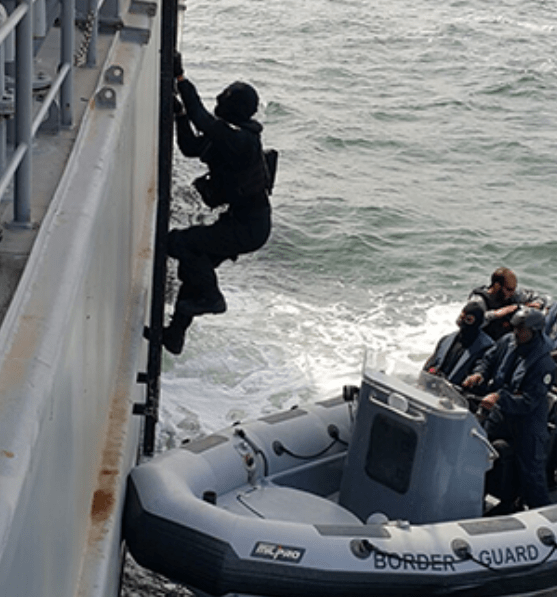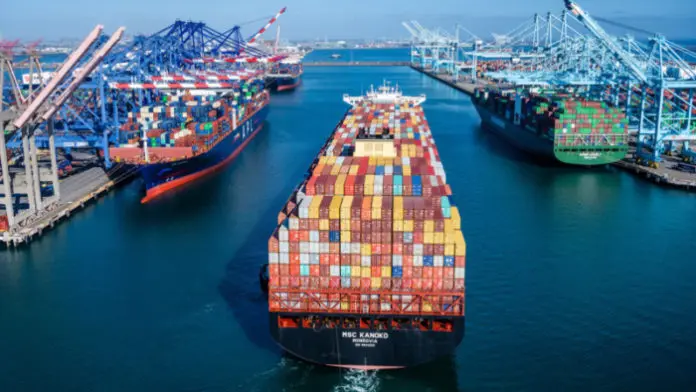-
Port of Los Angeles moved a record 876,611 TEUs in June, edging out its best June in history last year. Neighboring Port of Long Beach also achieved its most active June and busiest quarter on record, moving 835,412 TEUs
-
LA Port handled 5.4 million TEUs by mid-2022, matching last year’s record pace. Port of Long Beach moved 5 million TEUs during the period
-
LA Port executive director Gene Seroka attributes the record figures to the port’s success in cutting ship queues by 75%, allowing workers to handle more vessels. Long Beach Port credits China’s lifting of COVID lockdowns for the strong trade
Port of Los Angeles moved a record 876,611 twenty-foot equivalent units (TEUs) in June, edging out last year’s best June in the Port’s 115-year history. Nearby Port of Long Beach equally achieved its most active June and busiest quarter on record, moving 835,412 TEUs.
LA Port has handled more than 5.4 million TEUs at the mid-point of 2022, matching last year’s record-setting pace. Port of Long Beach moved 5 million TEUs in the first half.
The two ports announced their results as hundreds of independent truck drivers protested at the gates of the two California ports against the newly passed state law, AB5 or the “gig worker” law, which sets tougher standards for classifying workers as independent contractors.
“Halfway through the year, we’ve been able to reduce the number of vessels waiting to berth by 75%, allowing dock workers to efficiently process more vessels,” said Port of Los Angeles executive director Gene Seroka.
“We’re already beginning to handle back-to-school, fall fashion and year-end holiday goods. Despite inflation and higher-than-usual inventory, we expect cargo volume to remain robust the second half of the year.”
Seroka announced the June numbers at a media briefing, where he was joined by Retired Gen. Stephen R. Lyons, the recently appointed port and supply chain envoy to the Biden-Harris Administration Supply Chain Disruptions Task Force.
Lyons discussed supply chain challenges across the United States and what is being done to improve the movement of goods and help bring down costs for American families.
June 2022 loaded imports reached 444,680 TEUs, a 5% decline from the previous year, but 12% higher than the previous five-year June average.
Loaded exports came in at 93,890 TEUs, down 2.3% from the same period last year. American exports out of the Port of Los Angeles had declined in 39 of the past 44 months.
Empty containers reached 338,041 TEUs, an increase of 8.1% from last year.
The busiest seaport in the Western Hemisphere, the Port of Los Angeles is North America’s leading trade gateway and has ranked as the No.1 container port in the United States for 22 consecutive years.
The Port of Long Beach also achieved its most active June and busiest quarter on record, boosted by increased consumer demand as retailers stock shelves for back-to-school shopping.
The 835,412 TEUs that dockworkers and terminal operators moved in June was up 15.3% from the same month last year and surpassed the previous record set in June 2018 by 83,224 TEUs.
Imports rose 16.4% to 415,677 TEUs, while exports saw a 1.4% decrease to 115,303 TEUs. Empty containers moved through the Port jumped 21.6% to 304,433 TEUs.
The Port moved 5,007,778 TEUs during the first half of 2022, up 5.3% from the same period last year. It was also the port’s best quarter overall with 2,547,119 TEUs moved from April 1 to June 30, breaking the previous record set during the first quarter of 2022 by 86,460 TEUs.
“We are anticipating a robust summer season as consumer demand continues to drive cargo to our docks,” said Port of Long Beach executive director Mario Cordero.
“We expect to remain moderately busy in the coming months, and we will work to promptly process containers lingering at the port.”
“Our waterfront workforce continues to move cargo at a record-setting pace,” said Long Beach Harbor Commission president Steven Neal. “Our strong partnerships with labor and industry continue to make us a leader in trans-Pacific trade.”
The cargo influx arrived as pandemic-induced shutdowns were lifted in China, retailers stocked up on back-to-school supplies and ongoing consumer demand continued to be robust despite inflation and the potential threat of an economic recession in 2023.
SOURCE: https://www.portcalls.com/la-long-beach-ports-best-june-ever/

